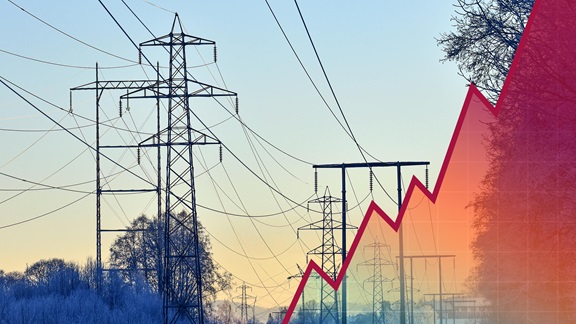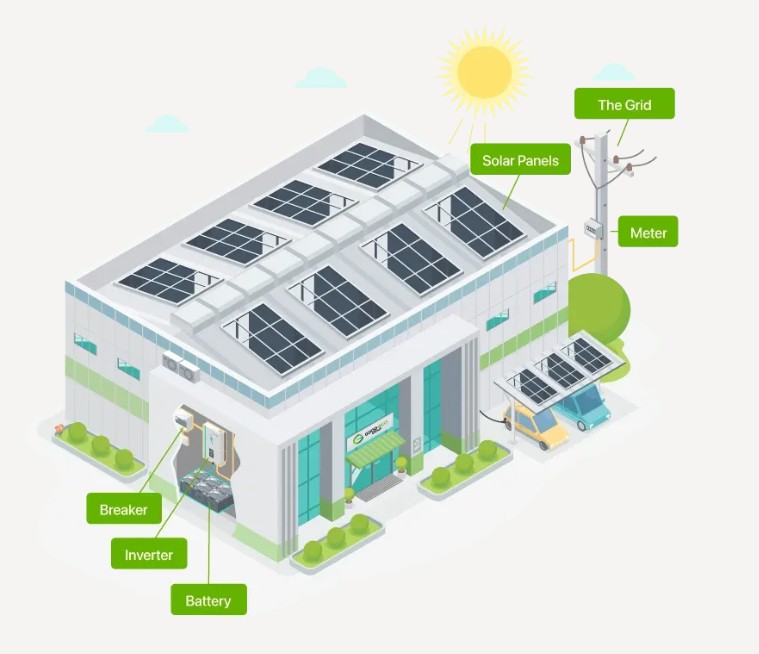


Electricity prices in NSW have skyrocketed—up 54% in the last 3 years and more than 150% over the past 7 years. For many medium-sized businesses, this means annual bills of $30,000–$50,000.
Switching to a commercial solar PV system is a smart way to take control of your energy costs and protect your bottom line.
Why Choose Comstel Energy?
At Comstel Energy, we specialise in helping businesses reduce energy expenses with custom-designed solar solutions. Our team of expert consultants will guide you every step of the way, ensuring your system is tailored to your unique energy needs.
Our approach
Ways to Ensure a Cash Flow Positive Commercial Solar Investment
Smart Solar Solutions for Your Business

At Comstel Energy, we design and deliver solar systems that are tailored to your business needs — ensuring maximum savings and long-term performance.
- Right-Size Your System: Your solar installation should align with your actual energy requirements. Too small, and it won’t offset enough costs; too large, and it can add unnecessary expense.
- Maximise Sunlight Exposure: Panels are placed for optimal sunlight capture, generating more electricity and increasing your savings.
- Flexible Financing Options: We provide finance solutions that suit your budget and cash flow, helping your investment stay positive from day one.
- Performance Monitoring: Ongoing monitoring ensures your system operates at peak efficiency. If performance drops, we quickly make adjustments to keep savings on track.
- Energy Storage Solutions: Pair your system with a solar battery to store excess energy for use at night or during peak times, reducing grid reliance and enhancing energy independence.
Benefit: A customised, well-managed solar solution that maximises savings, improves sustainability, and grows with your business.
Mandatory Disclosure Reporting
Reporting Timeline – When Do These Changes Take Effect?
It’s important for businesses to determine early whether they will be subject to these requirements and understand any new obligations that may affect their operations.
Affected Businesses – Who Needs to Report?
Group 1 (2024–2025): Must meet two of three criteria:
Reporting is divided into three groups under Chapter 2M of the Corporations Act
- Over 500 employees
- Consolidated gross assets ≥ $1 billion
- Consolidated annual revenue ≥ $500 million
Group 2 (2026–2027): Must meet two of three criteria:
- Over 250 employees
- Consolidated gross assets ≥ $500 million
- Consolidated annual revenue ≥ $200 million
Group 3 (2028–2029): Must meet two of three criteria:
- Over 100 employees
- Consolidated gross assets ≥ $25 million
- Consolidated annual revenue ≥ $50 million
Reporting Obligations – What Will You Need to Report?
- Businesses required to report must disclose:
- Climate-related financial risks and opportunities
- Greenhouse gas emissions
- Strategies for emissions reduction
- Financial implications of climate change
Proactive Measures for Emissions Reduction
One common barrier is access to capital. Cash is often needed for core operations, making sustainable upgrades seem less urgent. However, investing in energy-efficient technologies and sustainable infrastructure can improve reporting compliance and financial performance.
Green loans from Sustainable Australia Fund (SAF) can help. These loans cover sustainable building upgrades, often cashflow positive over time, and require no deposit, helping businesses preserve cash while reducing emissions
Examples of Proactive Sustainability Improvements
- Solar PV installations and battery storage
- Electric vehicle charging stations
- HVAC upgrades and insulation
- Removal of flammable cladding and roofing improvements
How to Get Started
- Conduct a carbon footprint assessment: Identify emission hotspots and prioritise reduction efforts. SAF can help locate assessors familiar with green loan financing.
- Implement energy efficiency measures: Optimise energy consumption, adopt renewable energy, and improve HVAC systems. Multiple upgrades can often be funded under a single green loan.
- Sustainable supply chain practices: Work with suppliers who share your sustainability goals, reduce packaging, optimise transportation, and support circular economy practices.
- Engage employees: Foster a sustainability culture through training, awareness programs, and empowering employees to contribute ideas.
- Invest in carbon offsetting when necessary: For unavoidable emissions, consider offsets such as reforestation, renewable energy projects, or sustainable agriculture initiatives.
For more details on qualifying business criteria, refer to the Climate-Related Financial Disclosure Consultation Paper.
